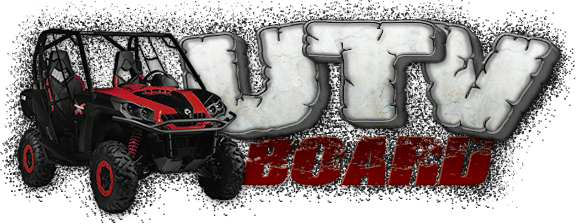Injectors
-
Similar Topics
-
By CapnWalleye
Just picked up a Hisun 500 that had shift issues (corroded fan gear) which I fixed. It also didn't seem to be running smoothly then all of a sudden it got worse. It seems to miss on both idle and when pushing the gas pedal to the floor and doesn't seem to be running at full power. I've been working with a local person who is walking me through some steps, but I'd like some input from this group as well. What I've done:
- drained the fuel tank and replaced it with 93 octane fuel and added heet to help with any water problems.
- replaced the fuel injector.
- disconnected the battery (several times) to allow the module to reset.
- set the valve clearance, both intake and exhaust, within specs ... intake was tight but exhaust seemed fine.
- replaced the battery.
- replaced the O2 sensor.
Nothing has helped. Not sure what the next steps are, but would appreciate any expertise that can be offered here.
-
By Homeowner A
Is there a code reader available for the Coleman UTV 400? I tried using the HUD ECU Hacker software and cables/adapters but no luck OBD to delphi 6 pin and KKL VAG as well as ELM327. Will not connect. I was able to get it to connect randomly a couple of times, but haven't been able to since. I was able to clear and read the codes briefly. I'm aware of the Tiny Scan 301 but it doesn't seem to be readily available. There's a few out there but they are expensive.
-
By Marie
hello, i need help figuring out where all these wires go on this battery. I can't seem to find any pictures diagrams. As to what should or shouldn't be attached and where these two plugs go, that aren't plugged in. this was got as a project. would run then die and battery would have to be jumped off to start again stator has now been replaced but any help with this wiring would be appreciated.
-
By Marie
Hello, we recently got a 2013 Hisun 800 as a little project for my husband and I to work on. Turns out the guys before us loved the mud anyway. We have replaced the stator and now going to do the Rectifier but here is the hold up as seen in the picture. There are tons of wires going to the battery. I cant seem to find anything that shows what wires should, or shouldn't be attached to the battery or where these 2 plugs go. if someone would please take some pics or share knowledge to where they go I would appreciate it greatly.
-
-
By SSgt1994
Hello everyone, second time posted looking for assistance. First time you all were a great help!
I have an 2013 XY Powersports 600GKE UTV, sweet little machine when she was running. My youngest last fall get it covered in mud, and then blew the engine. I mean she doesn't start any more, and we've even tried rebuilding it since he's in a Vocational School for Power Sports and Diesel course, but no luck.
One of the other members (NVM"something") was really knowledgeable about the machine I had and the engine, all I can tell you is its a CFMoto. If I can't find a replacement, does anyone know if there is one that it can be easily swapped out with, or even minor modifications.
Thanks!
Myron
-






Recommended Posts
Join the conversation
You can post now and register later. If you have an account, sign in now to post with your account.
Note: Your post will require moderator approval before it will be visible.